![]()
![]() It is the first day of January of 2016. Yes, the New Year has begun. We are all a bit older, wiser, and sadly, a little closer to death. Naturally, this is the perfect time to look back at some of the news stories that made headlines in Pakistan and across the world.
It is the first day of January of 2016. Yes, the New Year has begun. We are all a bit older, wiser, and sadly, a little closer to death. Naturally, this is the perfect time to look back at some of the news stories that made headlines in Pakistan and across the world.
![]() Girls at Dhabas:
For Pakistanis worn down by the taxing life of the big city, nothing quite reignites the brain cells like a good cup of doodh pati (tea). Sold at dhabas (roadside restaurants), these delicious cups of hot tea brewed in milk are consumed by the masses at every corner of the country with great regularity.
[caption id="" align="alignnone" width="600"]
Girls at Dhabas:
For Pakistanis worn down by the taxing life of the big city, nothing quite reignites the brain cells like a good cup of doodh pati (tea). Sold at dhabas (roadside restaurants), these delicious cups of hot tea brewed in milk are consumed by the masses at every corner of the country with great regularity.
[caption id="" align="alignnone" width="600"]![]() Photo: Indiegogo[/caption]
While women aren’t barred from dhabas, they aren’t as regular a fixture at these small tea shops as men due to various social norms. When regular tea consuming friends Sadia Khatri, Natasha Ansari, Rabeea Arif and Najia Khan, decided to confront the gender disparity, they started the hashtag #girlsatdhaba.
Little did they know that their movement would take on a life of its own.
Today, the initiative has thousands of fans on Facebook, Twitter, Instagram, and Tumblr. #girlsatdhaba has been covered by news websites such as The Express Tribune and Buzzfeed, and has even caught on in the neighbouring India.
This, of course, is fantastic. The patriarchal mindset of Pakistani society will start changing when women reclaim their social spaces. Our men need to become accustomed to seeing single or groups of women in public settings without male escorts. I, for one look, forward to #girlsonscooters #girlsinjeans and #girlsdrivingtaxis as the next Pakistani social movements.
Pakistan demands return of Koh-i-Noor diamond from Britain:
[caption id="" align="alignnone" width="640"]
Photo: Indiegogo[/caption]
While women aren’t barred from dhabas, they aren’t as regular a fixture at these small tea shops as men due to various social norms. When regular tea consuming friends Sadia Khatri, Natasha Ansari, Rabeea Arif and Najia Khan, decided to confront the gender disparity, they started the hashtag #girlsatdhaba.
Little did they know that their movement would take on a life of its own.
Today, the initiative has thousands of fans on Facebook, Twitter, Instagram, and Tumblr. #girlsatdhaba has been covered by news websites such as The Express Tribune and Buzzfeed, and has even caught on in the neighbouring India.
This, of course, is fantastic. The patriarchal mindset of Pakistani society will start changing when women reclaim their social spaces. Our men need to become accustomed to seeing single or groups of women in public settings without male escorts. I, for one look, forward to #girlsonscooters #girlsinjeans and #girlsdrivingtaxis as the next Pakistani social movements.
Pakistan demands return of Koh-i-Noor diamond from Britain:
[caption id="" align="alignnone" width="640"]![]() Photo: Reuters[/caption]
After some Indians sued England’s Queen Elizabeth for the return of the Koh-i- Noor diamond, many Pakistanis scoffed,
Photo: Reuters[/caption]
After some Indians sued England’s Queen Elizabeth for the return of the Koh-i- Noor diamond, many Pakistanis scoffed,
“You’re kidding right? Ranjit Singh’s capital was Lahore. His empire was in Pakistan. He was born in a Pakistani city. His granddaughter died a Pakistani. OK so it was India at the time… but still!”
So naturally, we too decided to file a
court petition for the return of the 105-carat diamond.
Personally, I think Pakistan is better off examining its treatment of various
minorities, relics, and
heritage sites than chasing the diamond. Our stifling lack of multiculturalism won’t be fixed by the return of Koh-i-Noor. Also, I’d hate to see the diamond end up in the government’s hands, where 10% of it disappears into the pocket of some politician.
Pakistani man marries two girls on the same day:
The bizarre thing about a
man marrying two cousins on the same day in a ceremony where he was embracing both of them wasn’t in the act itself, as much it was in how he was hailed as a champion for doing so.
The story was picked up by various Pakistani TV channels, many of whom openly cheered the man for his actions. The groom, in his late 20s, was lauded for saving these two women from the process of finding husbands before they were past their shelf lives.
![]()
Oh those poor unmarried girls. Thank goodness this guy came along!
There are so many things wrong with this story. First of all, would the opposite have been okay? Would a woman have been applauded for saving two men from bachelorhood? Also, who says
unmarried girls need saving? Why must they be married by a certain date, if at all? Neither gender comes with an expiry date.
Woman from Sialkot gives birth to quintuplets:
[caption id="" align="alignnone" width="600"]
![]()
Photo: Dunya News[/caption]
In lighter news, a woman from Sialkot
gave birth to three girls and two boys at a Military Hospital. Certainly, the process must have been tough for the mother, and will continue to be trying as her children grow older. What’s more, the cost of raising these children is going to be very high, and one can only hope the family has been given some aid from the government to help in the journey.
But look at them! They are adorable!
https://www.youtube.com/watch?v=_h3N8xF7tQ4
Pakistani men are the third sexiest:
When a dating website ranked Pakistani men as the third sexiest in the world, local social media went into frenzy. The story was shared countless times across Facebook by Pakistani men who gloated and said,
“See… see?”
On the other hand, many Pakistani women were taken aback. Some even said,
“What? Have they even been to Karachi?”
Karachi men were immediately put off by these passive aggressive comments. We have some handsome men, some of whom are currently living in self-exile in the United Kingdom.
![]()
As it turns out, the entire report was flawed.
Techjuice.pk expands on the issues with the survey:
“In this case, the online dating portal Miss Travel did conduct a survey to collect opinions on ‘the Sexiest Nationalities’, but they were based on one sample male from different countries as an example. And the only contribution from Pakistan to that list was Zayn Malik, a 22-year-old born and bred in Bradford, United Kingdom, and whose remotest relation to Pakistan is that his father hails from this country.
[caption id="" align="alignnone" width="625"]
![]()
Photo: ZAP2IT[/caption]
But did the article-churning, social media sharing machines care? Nope.
Every single post that has been circulated ever since this story went viral has pictures of Pakistani celebrities like Hamza Ali Abbasi, Fawad Khan, Ali Zafar, and Imran Khan plastered all over the place. Were they even a part of this survey? Did any of the participating 66,309 American females ever see even so much as a photograph of these celebrities before they hit Zayn Malik’s name on that opinion poll questionnaire? Highly unlikely.”
![]() Please play with us India:
Please play with us India:
In 2015, the Pakistan Cricket Board (PCB) somewhat shamelessly chased its Indian counterpart to agree to a series. While the Indians remained impassive, the PCB released strange contradictory statements almost on a weekly basis regarding the series, hilariously giving their neighbours deadlines that the Board of Control for Cricket in India (BCCI) clearly didn’t care about.
[caption id="" align="alignnone" width="600"]
![]()
PCB Chairman Shaharyar Khan. Photo: AFP[/caption]
Ultimately, after months of trying to woo them, the
PCB finally gave up, after losing all self-respect in the eyes of cricket fans across the world.
Although a Pakistan-India series is obviously lucrative, it is a pity that the PCB came across as a would-be lover running desperate circles around a crush who wouldn’t give them the time of day.
![]() Paris and The Refugee Crisis:
Paris and The Refugee Crisis:
[caption id="" align="alignnone" width="600"]
![]()
Rescuers workers evacuate victims near the Bataclan concert hall in central Paris, on November 13, 2015. A number of people were killed and others injured in a series of gun attacks across Paris, as well as explosions outside the national stadium where France was hosting Germany. Photo: AFP[/caption]
This last year was an alarming period where extremism made headlines with great frequency. The
attacks in Paris shocked the world, where
ISIS conducted one of the deadliest attacks in the history of France. While there was
backlash against refugees, it is heartening to see that some nations continued in their overwhelming support for those displaced from their nations. Recently, the
Trudeau government welcomed thousands into Canada. Meanwhile,
Germany is said to have helped over a million refugees.
The price of safety:
[caption id="" align="alignnone" width="600"]
![]()
Photo: AFP[/caption]
The potential for terrorism has certainly affected the way we have lived our lives in 2015. Precautionary measures have affected both public transportation and air travel. Here in Pakistan, we too have had to deal with the inconvenience of restricted freedoms. This past year, more draconian measures were introduced in parliament designed to curb internet privacy in the name of protection. Most recently,
Blackberry threatened to pull out of Pakistan after the government demanded unfettered access to their encryption Enterprise Services.
[caption id="" align="alignnone" width="600"]
![]()
Photo: Mohammad Noman / Express[/caption]
Even New Year’s Day was a sombre affair in Karachi. Roads were shut down and
security was so tight that many Karachiites ushered in 2015 by sitting in their apartments and listening to the celebratory gunfire.
![]()
It was another bad year to be an Ahmadi in Pakistan. In Jhelum, Punjab, a factory owned by the Ahmadiyya community was
burned down by an angry mob. Although many escaped the factory complex, which contains a residential section, a number were still inside when the horror began. To make matters worse, an
Ahmadi place of worship was also torched. Through no fault of their own, these Pakistanis lost their homes and peace of mind thanks to local clerics who had riled up their worshipers with fiery speeches.
[caption id="" align="alignnone" width="640"]
![]()
Photo: Reuters[/caption]
Not a few months later, mobile shop owners at Hafeez Centre
hung up signs with derogatory language against Ahmadias. After these men were arrested, and the signs taken down in a commendable move by the Punjab government, a protest began against both the police and the minority group in question.
Sadly, it doesn’t seem like 2016 will be any different in terms of how tolerant our general public is of those who different beliefs than them. But there is light at the end of the tunnel. It seems like the Punjab government is serious about turning things around. Taking action at Hafeez Centre may have been a tiny step, but in context of this nation’s history, it was a giant leap.
![]()
The Kingdom has made headlines in 2015 for a variety of undesirable reasons. One of the most curious news stories was regarding Saudi Grand Mufti Sheikh Abdul Aziz, who has previously reportedly issued a fatwa that men should eat their wives when hungry. He
later denied this after the outrage and said that all churches in the Gulf should be destroyed, and
blamed Israel for ISIS.
[caption id="" align="alignnone" width="600"]
![]()
Saudi Grand Mufti Sheikh Abdul Aziz. Photo: AFP[/caption]
Look Mr Grand Mufti, we realise that Israel’s treatment of Palestinians has been deplorable, but let’s give credit where it’s due:
1. The
second highest number of foreign fighters killing, pillaging, and raping for ISIS are from Saudi Arabia, not Israel.
2. ISIS follows a radical version of Islam called
Wahhabism which is ‘rooted and encouraged’ in Saudi Arabia, not Israel.
3. According to
Wikileaks, Saudi Arabia, not Israel, has spread the cancerous Wahhabism to countries like Pakistan, infecting people with intolerance against “Christians, Jews, Shiites, Sufis, Sunni Muslims who do not follow Wahhabi doctrine, Hindus, atheists and others”, as reported by
Freedom House.
4. Ensaf Haidar, the wife of the imprisoned Saudi blogger Raif Badawi, said the
Saudi government behaves like Daesh (ISIS). Note, she didn’t say Israel.
5. Wikileaks mentions
Saudi Arabia as an ATM for terror groups such as Taliban, Al Qaeda, Lashkar-e-Taiba, as well as the unrest in Syria and Iraq. No sign of Israel in the picture.
So let’s not try to pass off the blame for this mad dog on to someone else.
![]() Pakistan:
Pakistan:
This was
a promising year for Pakistani cinema. We were treated to watchable films such as
Shah,
Manto,
3 Bahadur, and
Moor. While none of these films were perfect, they showed that our local film industry is on the right track. Incidentally, none of these cinematic releases made it to the list of top five highest grossing Pakistani films, even though they had respectable takes.
Surprisingly, the
highest grossing local film of 2015 was the trashy
Jawani Phir Nahi Ani, which
just goes to show:
sex sells.
![]() Star Wars:
Star Wars:
![]()
Sure,
The Force Awakens wasn’t perfect. For one, it closely followed the blueprint of
A New Hope. For the other, it carried a couple of plot holes larger than Jabba the Hut’s head. But it was the most entertaining film of the year and revived a franchise that had been nearly killed by the prequel trilogy. Perhaps it is because I am a diehard
Star Wars fan, but episode seven was my favourite film of the year. To date it has broken many
Box Office records, and could even challenge the gargantuan worldwide gross of
James Cameron’s Avatar.
Thanks for reading everyone. May the Force be with you in 2016.


 Photo: Twitter[/caption]
2. Mathira slips the tongue
I’m thinking Molty Foam fingers, nude cholis and a mohawk sported by controversy queen
Photo: Twitter[/caption]
2. Mathira slips the tongue
I’m thinking Molty Foam fingers, nude cholis and a mohawk sported by controversy queen  3. Sadaf Kanwal trips
How can a size -zero drop dead
3. Sadaf Kanwal trips
How can a size -zero drop dead  4. Model Jahan-e-Khalid wears a swan dress
Okay, so I have two wishes in life before I die.
1. I want to see
4. Model Jahan-e-Khalid wears a swan dress
Okay, so I have two wishes in life before I die.
1. I want to see  Swans too girly for this male model?
How about a horse thrown around his muscular shoulders? No?
How about a dog wrapped around his waist? How about a turban made from choohas (mice)? No?
I’m going to die unfulfilled!
5. Deepak Perwani pulls a Kanye West on Urwa Hocane
Swans too girly for this male model?
How about a horse thrown around his muscular shoulders? No?
How about a dog wrapped around his waist? How about a turban made from choohas (mice)? No?
I’m going to die unfulfilled!
5. Deepak Perwani pulls a Kanye West on Urwa Hocane


 It is the first day of January of 2016. Yes, the New Year has begun. We are all a bit older, wiser, and sadly, a little closer to death. Naturally, this is the perfect time to look back at some of the news stories that made headlines in Pakistan and across the world.
It is the first day of January of 2016. Yes, the New Year has begun. We are all a bit older, wiser, and sadly, a little closer to death. Naturally, this is the perfect time to look back at some of the news stories that made headlines in Pakistan and across the world.
 Girls at Dhabas:
For Pakistanis worn down by the taxing life of the big city, nothing quite reignites the brain cells like a good cup of doodh pati (tea). Sold at dhabas (roadside restaurants), these delicious cups of hot tea brewed in milk are consumed by the masses at every corner of the country with great regularity.
[caption id="" align="alignnone" width="600"]
Girls at Dhabas:
For Pakistanis worn down by the taxing life of the big city, nothing quite reignites the brain cells like a good cup of doodh pati (tea). Sold at dhabas (roadside restaurants), these delicious cups of hot tea brewed in milk are consumed by the masses at every corner of the country with great regularity.
[caption id="" align="alignnone" width="600"]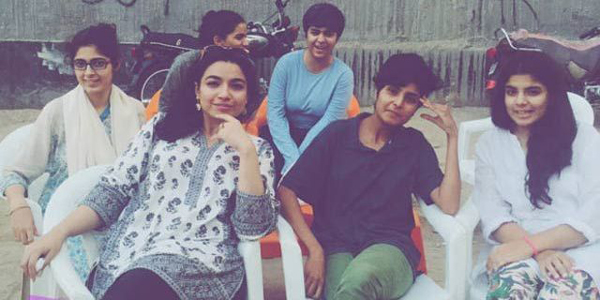 Photo: Indiegogo[/caption]
While women aren’t barred from dhabas, they aren’t as regular a fixture at these small tea shops as men due to various social norms. When regular tea consuming friends Sadia Khatri, Natasha Ansari, Rabeea Arif and Najia Khan, decided to
Photo: Indiegogo[/caption]
While women aren’t barred from dhabas, they aren’t as regular a fixture at these small tea shops as men due to various social norms. When regular tea consuming friends Sadia Khatri, Natasha Ansari, Rabeea Arif and Najia Khan, decided to 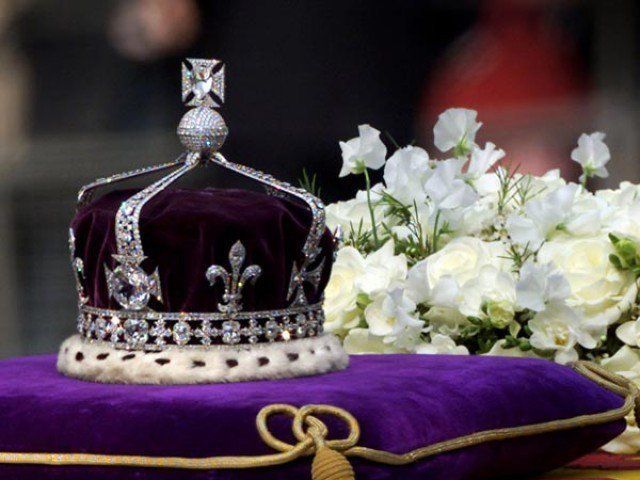 Photo: Reuters[/caption]
After some
Photo: Reuters[/caption]
After some  Oh those poor unmarried girls. Thank goodness this guy came along!
There are so many things wrong with this story. First of all, would the opposite have been okay? Would a woman have been applauded for saving two men from bachelorhood? Also, who says
Oh those poor unmarried girls. Thank goodness this guy came along!
There are so many things wrong with this story. First of all, would the opposite have been okay? Would a woman have been applauded for saving two men from bachelorhood? Also, who says  Photo: Dunya News[/caption]
In lighter news, a woman from Sialkot
Photo: Dunya News[/caption]
In lighter news, a woman from Sialkot  As it turns out, the entire report was flawed.
As it turns out, the entire report was flawed. 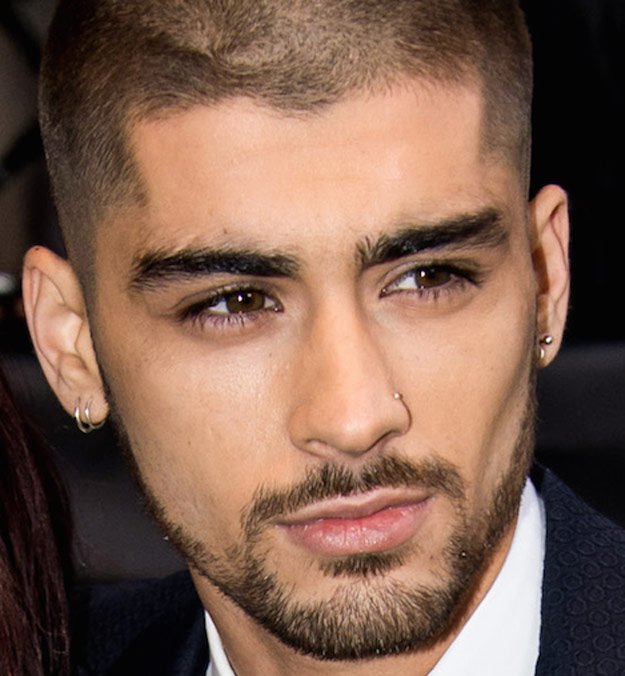 Photo: ZAP2IT[/caption]
Photo: ZAP2IT[/caption]
 Please play with us India:
In 2015, the Pakistan Cricket Board (PCB) somewhat shamelessly chased its Indian counterpart to agree to a series. While the Indians remained impassive, the PCB released strange contradictory statements almost on a weekly basis regarding the series, hilariously giving their neighbours deadlines that the Board of Control for Cricket in India (BCCI) clearly didn’t care about.
[caption id="" align="alignnone" width="600"]
Please play with us India:
In 2015, the Pakistan Cricket Board (PCB) somewhat shamelessly chased its Indian counterpart to agree to a series. While the Indians remained impassive, the PCB released strange contradictory statements almost on a weekly basis regarding the series, hilariously giving their neighbours deadlines that the Board of Control for Cricket in India (BCCI) clearly didn’t care about.
[caption id="" align="alignnone" width="600"]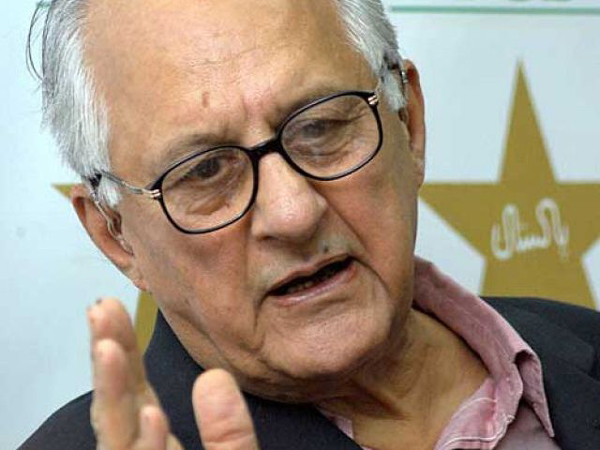 PCB Chairman Shaharyar Khan. Photo: AFP[/caption]
Ultimately, after months of trying to woo them, the
PCB Chairman Shaharyar Khan. Photo: AFP[/caption]
Ultimately, after months of trying to woo them, the  Paris and The Refugee Crisis:
[caption id="" align="alignnone" width="600"]
Paris and The Refugee Crisis:
[caption id="" align="alignnone" width="600"] Rescuers workers evacuate victims near the Bataclan concert hall in central Paris, on November 13, 2015. A number of people were killed and others injured in a series of gun attacks across Paris, as well as explosions outside the national stadium where France was hosting Germany. Photo: AFP[/caption]
This last year was an alarming period where extremism made headlines with great frequency. The
Rescuers workers evacuate victims near the Bataclan concert hall in central Paris, on November 13, 2015. A number of people were killed and others injured in a series of gun attacks across Paris, as well as explosions outside the national stadium where France was hosting Germany. Photo: AFP[/caption]
This last year was an alarming period where extremism made headlines with great frequency. The 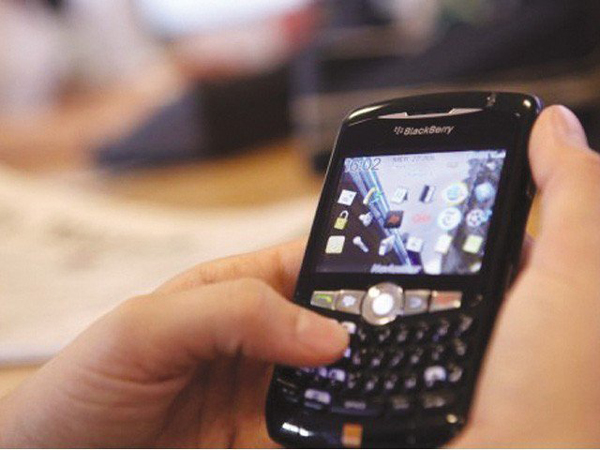 Photo: AFP[/caption]
The potential for terrorism has certainly affected the way we have lived our lives in 2015. Precautionary measures have affected both public transportation and air travel. Here in Pakistan, we too have had to deal with the inconvenience of restricted freedoms. This past year, more draconian measures were introduced in parliament designed to curb internet privacy in the name of protection. Most recently,
Photo: AFP[/caption]
The potential for terrorism has certainly affected the way we have lived our lives in 2015. Precautionary measures have affected both public transportation and air travel. Here in Pakistan, we too have had to deal with the inconvenience of restricted freedoms. This past year, more draconian measures were introduced in parliament designed to curb internet privacy in the name of protection. Most recently, 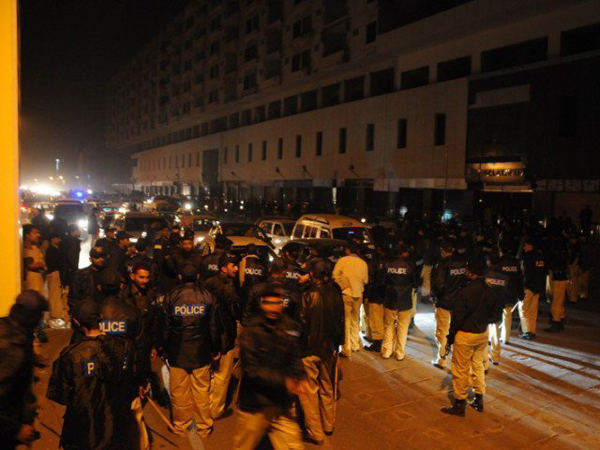 Photo: Mohammad Noman / Express[/caption]
Even New Year’s Day was a sombre affair in Karachi. Roads were shut down and
Photo: Mohammad Noman / Express[/caption]
Even New Year’s Day was a sombre affair in Karachi. Roads were shut down and  It was another bad year to be an Ahmadi in Pakistan. In Jhelum, Punjab, a factory owned by the Ahmadiyya community was
It was another bad year to be an Ahmadi in Pakistan. In Jhelum, Punjab, a factory owned by the Ahmadiyya community was  Photo: Reuters[/caption]
Not a few months later, mobile shop owners at Hafeez Centre
Photo: Reuters[/caption]
Not a few months later, mobile shop owners at Hafeez Centre  The Kingdom has made headlines in 2015 for a variety of undesirable reasons. One of the most curious news stories was regarding Saudi Grand Mufti Sheikh Abdul Aziz, who has previously reportedly issued a fatwa that men should eat their wives when hungry. He
The Kingdom has made headlines in 2015 for a variety of undesirable reasons. One of the most curious news stories was regarding Saudi Grand Mufti Sheikh Abdul Aziz, who has previously reportedly issued a fatwa that men should eat their wives when hungry. He 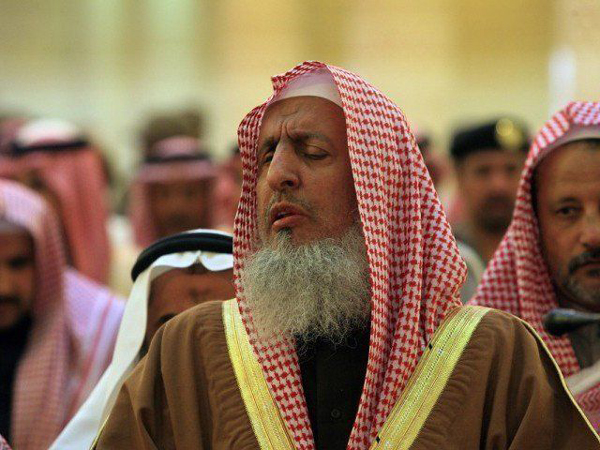 Saudi Grand Mufti Sheikh Abdul Aziz. Photo: AFP[/caption]
Look Mr Grand Mufti, we realise that Israel’s treatment of Palestinians has been deplorable, but let’s give credit where it’s due:
1. The
Saudi Grand Mufti Sheikh Abdul Aziz. Photo: AFP[/caption]
Look Mr Grand Mufti, we realise that Israel’s treatment of Palestinians has been deplorable, but let’s give credit where it’s due:
1. The  Pakistan:
This was
Pakistan:
This was  Star Wars:
Star Wars:
 Sure, The Force Awakens wasn’t perfect. For one, it closely followed the blueprint of A New Hope. For the other, it carried a couple of plot holes larger than Jabba the Hut’s head. But it was the most entertaining film of the year and revived a franchise that had been nearly killed by the prequel trilogy. Perhaps it is because I am a diehard
Sure, The Force Awakens wasn’t perfect. For one, it closely followed the blueprint of A New Hope. For the other, it carried a couple of plot holes larger than Jabba the Hut’s head. But it was the most entertaining film of the year and revived a franchise that had been nearly killed by the prequel trilogy. Perhaps it is because I am a diehard 
 Photo: Facebook- Ho Mann Jahaan Official[/caption]
https://www.youtube.com/watch?v=WOCO6FrxD4M
2. You might belong to the lower strata of society, and may also carry your humble foundations on your arm; but that won't stop you from looking dapper at will. Also, you can deliberately pronounce monotonous as mo-no-tone-ous to convince us of your lack of privileges, but owing to your showy friends and high-profile (and
Photo: Facebook- Ho Mann Jahaan Official[/caption]
https://www.youtube.com/watch?v=WOCO6FrxD4M
2. You might belong to the lower strata of society, and may also carry your humble foundations on your arm; but that won't stop you from looking dapper at will. Also, you can deliberately pronounce monotonous as mo-no-tone-ous to convince us of your lack of privileges, but owing to your showy friends and high-profile (and 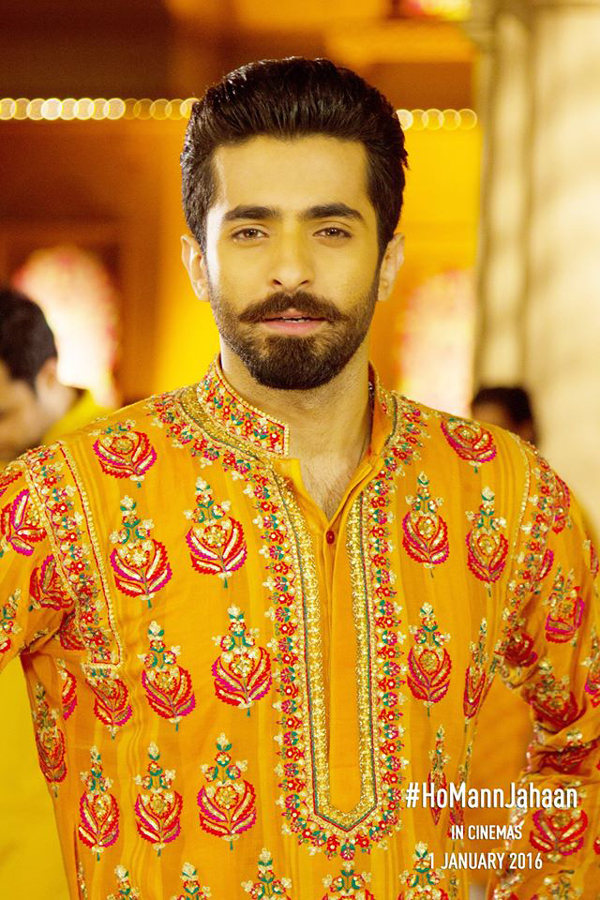 Photo: Facebook- Ho Mann Jahaan Official[/caption]
[caption id="" align="alignnone" width="600"]
Photo: Facebook- Ho Mann Jahaan Official[/caption]
[caption id="" align="alignnone" width="600"]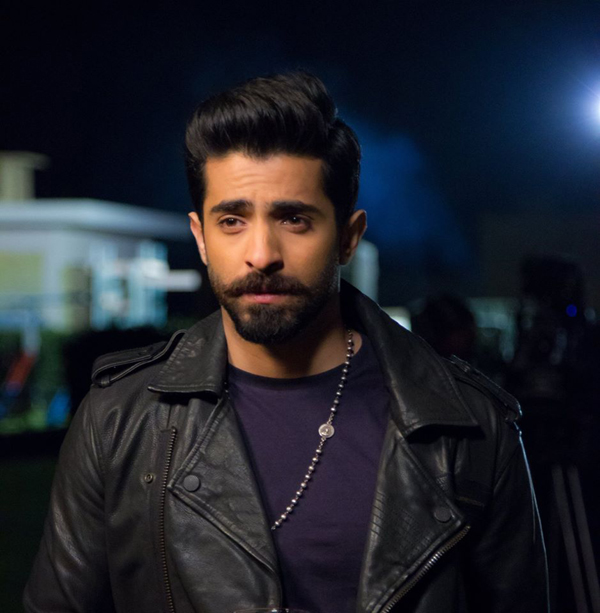 Photo: Facebook- Ho Mann Jahaan Official[/caption]
3. Your life might be a complete mess, replete with all the tragedies that would give “
Photo: Facebook- Ho Mann Jahaan Official[/caption]
3. Your life might be a complete mess, replete with all the tragedies that would give “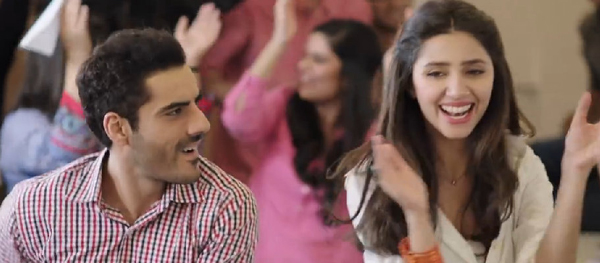 Screenshot[/caption]
[caption id="" align="alignnone" width="600"]
Screenshot[/caption]
[caption id="" align="alignnone" width="600"]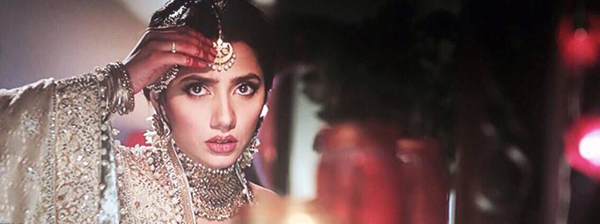 Photo: Facebook- Ho Mann Jahaan Official[/caption]
4. Speaking of which, it has been sadly revealed that there’s only so much you can digest (and appreciate) in the name of
Photo: Facebook- Ho Mann Jahaan Official[/caption]
4. Speaking of which, it has been sadly revealed that there’s only so much you can digest (and appreciate) in the name of 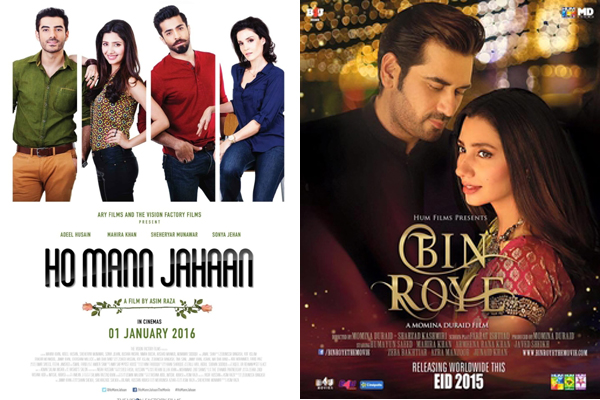 5. Cameos might have registered themselves as the ‘in’ thing, but they are sure to be met with indifference (or worse, yawns) if they do little to compliment the story-line. Who would've thought that the sight of heart-throbs like
5. Cameos might have registered themselves as the ‘in’ thing, but they are sure to be met with indifference (or worse, yawns) if they do little to compliment the story-line. Who would've thought that the sight of heart-throbs like  - Parents will always understand you at the end of the day, and vice versa. In this Pakistani version of “
- Parents will always understand you at the end of the day, and vice versa. In this Pakistani version of “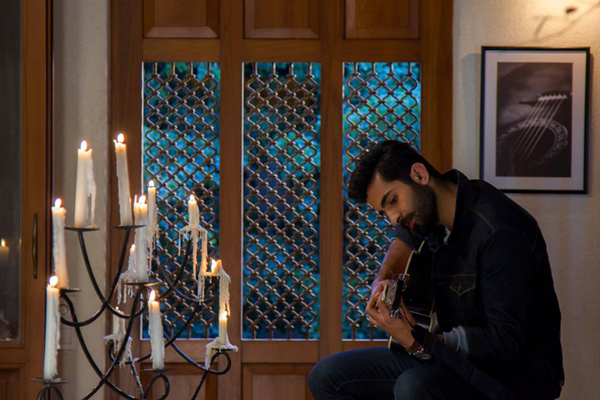 Photo: Facebook- Ho Mann Jahaan Official[/caption]
6. If you’re single and a bit too eager to mingle, friends’ mehndis are where you should be heading. You can always count on finding a hot, compatible, eligible match for you. (Hint: they will approach you with all the Bollywood clichés - your table is empty and they’ll ask if they can take a seat; followed by the usual - ‘I don't really know many people here!’). To which you’re like, “Hell, baby. Now you know me well-enough. For life, that is!”
[caption id="" align="alignnone" width="600"]
Photo: Facebook- Ho Mann Jahaan Official[/caption]
6. If you’re single and a bit too eager to mingle, friends’ mehndis are where you should be heading. You can always count on finding a hot, compatible, eligible match for you. (Hint: they will approach you with all the Bollywood clichés - your table is empty and they’ll ask if they can take a seat; followed by the usual - ‘I don't really know many people here!’). To which you’re like, “Hell, baby. Now you know me well-enough. For life, that is!”
[caption id="" align="alignnone" width="600"]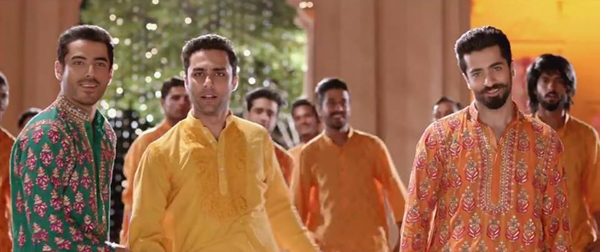 Photo: Facebook- Ho Mann Jahaan Official[/caption]
[caption id="" align="alignnone" width="600"]
Photo: Facebook- Ho Mann Jahaan Official[/caption]
[caption id="" align="alignnone" width="600"] Photo: Facebook- Ho Mann Jahaan Official[/caption]
[caption id="" align="alignnone" width="600"]
Photo: Facebook- Ho Mann Jahaan Official[/caption]
[caption id="" align="alignnone" width="600"]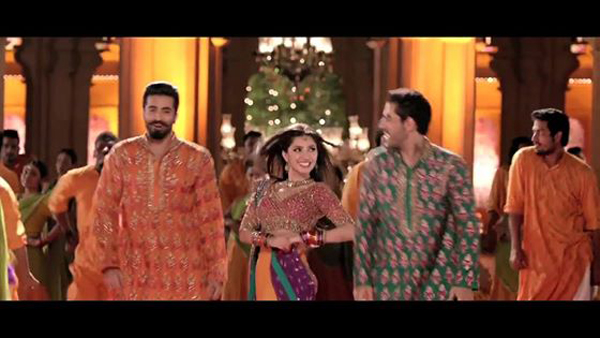 Photo: Facebook- Ho Mann Jahaan Official[/caption]
7. Your dad might be a border-line fanatic, but he’ll just accept you if you're strong-headed enough. And he won’t go berserk after barring you from stopping music and then seeing you on national television out of the blue. You just have to present him, very sweetly, an invitation to your wedding (about which, again, he has no idea), and he will be there to bless you in all his might. Well the film has already been playing for a bit too long, so we’re too tired to question the sanity of this!
[caption id="" align="alignnone" width="600"]
Photo: Facebook- Ho Mann Jahaan Official[/caption]
7. Your dad might be a border-line fanatic, but he’ll just accept you if you're strong-headed enough. And he won’t go berserk after barring you from stopping music and then seeing you on national television out of the blue. You just have to present him, very sweetly, an invitation to your wedding (about which, again, he has no idea), and he will be there to bless you in all his might. Well the film has already been playing for a bit too long, so we’re too tired to question the sanity of this!
[caption id="" align="alignnone" width="600"]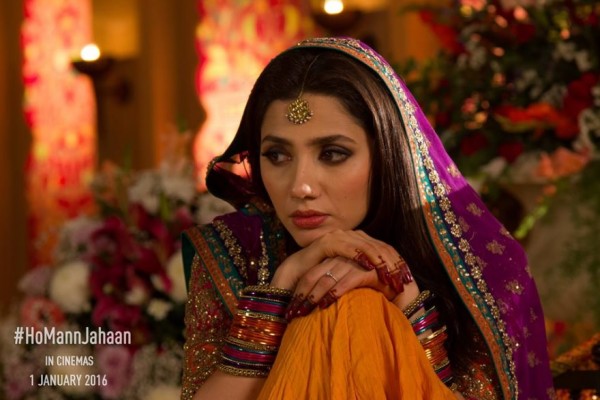 Photo: Facebook- Ho Mann Jahaan Official[/caption]
8. When they say a film is made on the editing table, they aren’t kidding. A film can always (and I repeat, always) use some sleek editing. And then some more of it. If you’re bent upon dwelling on all the unnecessary bits, go for a
Photo: Facebook- Ho Mann Jahaan Official[/caption]
8. When they say a film is made on the editing table, they aren’t kidding. A film can always (and I repeat, always) use some sleek editing. And then some more of it. If you’re bent upon dwelling on all the unnecessary bits, go for a 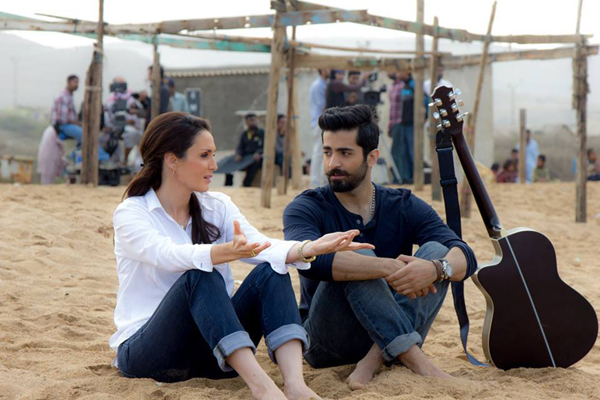 Photo: Facebook- Ho Mann Jahaan Official[/caption]
[caption id="" align="alignnone" width="600"]
Photo: Facebook- Ho Mann Jahaan Official[/caption]
[caption id="" align="alignnone" width="600"]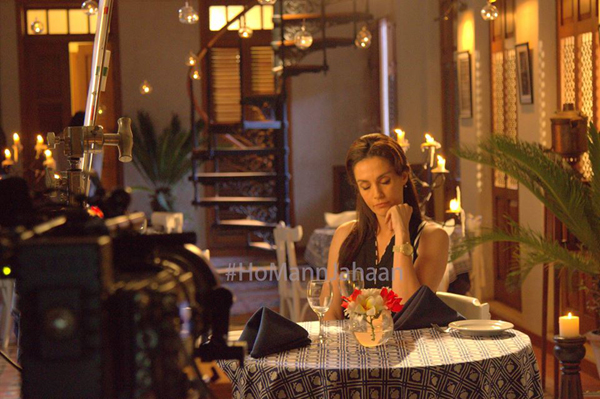 Photo: Facebook- Ho Mann Jahaan Official[/caption]
10.
Photo: Facebook- Ho Mann Jahaan Official[/caption]
10. 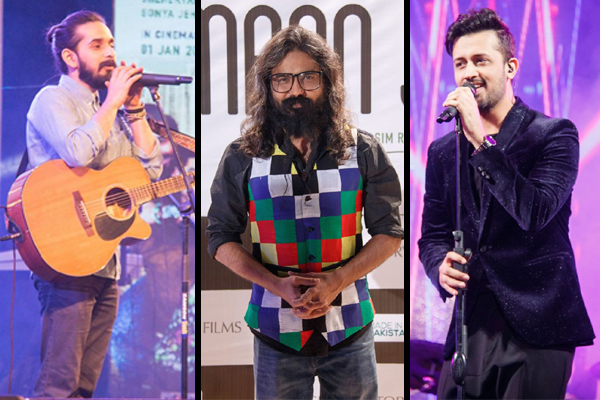 11. Everyone is selfish. Everyone uses you for their own good, eventually (especially the men). But stay tuned: Everyone also learns a lesson somehow and then competes with Mother Teresa in selflessness. Okay, that’s a bit of an exaggeration there - but given the promising trailers and mammoth-like publicity, so is this film.
[embed width-"620" height="348"]https://vimeo.com/142850097[/embed]
[poll id="399"]
11. Everyone is selfish. Everyone uses you for their own good, eventually (especially the men). But stay tuned: Everyone also learns a lesson somehow and then competes with Mother Teresa in selflessness. Okay, that’s a bit of an exaggeration there - but given the promising trailers and mammoth-like publicity, so is this film.
[embed width-"620" height="348"]https://vimeo.com/142850097[/embed]
[poll id="399"]
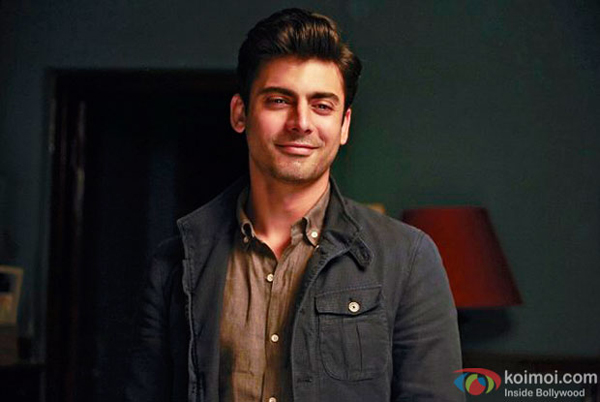 Photo: Koimoi[/caption]
If you are tired of living your life under the weight of all the expectations that come your way for acting to fulfil the ‘faultless child’ tag that you are burdened with and need to break free from the shackles of being eternally considered responsible.
The quintessential black sheep – Arjun Kapoor (Sidharth Malhotra)
[caption id="" align="alignnone" width="600"]
Photo: Koimoi[/caption]
If you are tired of living your life under the weight of all the expectations that come your way for acting to fulfil the ‘faultless child’ tag that you are burdened with and need to break free from the shackles of being eternally considered responsible.
The quintessential black sheep – Arjun Kapoor (Sidharth Malhotra)
[caption id="" align="alignnone" width="600"]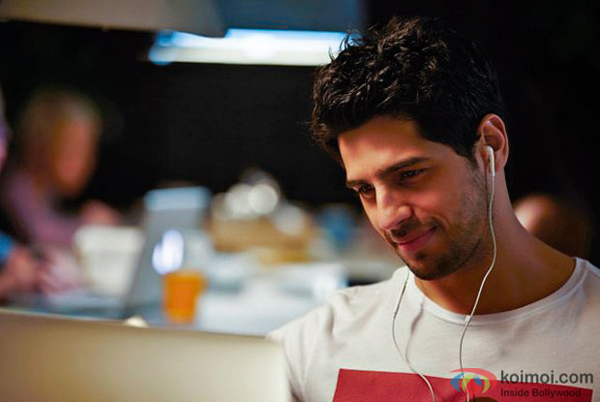 Photo: Koimoi[/caption]
If living forever under the shadow of a successful sibling, always thought off as second best and immature has worn you out.
The estranged couple - Harsh Kapoor (Rajat Kapoor) and Sunita (Ratna Pathak Shah)
[caption id="" align="alignnone" width="600"]
Photo: Koimoi[/caption]
If living forever under the shadow of a successful sibling, always thought off as second best and immature has worn you out.
The estranged couple - Harsh Kapoor (Rajat Kapoor) and Sunita (Ratna Pathak Shah)
[caption id="" align="alignnone" width="600"]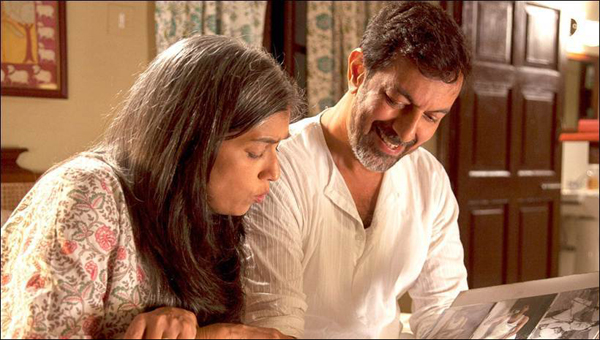 Photo: Screenshot[/caption]
If constant bickering about anything and everything, right down from a leaked pipe all the way up to the serious business of household finances, is slowly eating up your already gone sour relationship.
The happy go lucky daddu (Grandpa) – Amarjeet Kapoor (Rishi Kapoor)
[caption id="" align="alignnone" width="600"]
Photo: Screenshot[/caption]
If constant bickering about anything and everything, right down from a leaked pipe all the way up to the serious business of household finances, is slowly eating up your already gone sour relationship.
The happy go lucky daddu (Grandpa) – Amarjeet Kapoor (Rishi Kapoor)
[caption id="" align="alignnone" width="600"]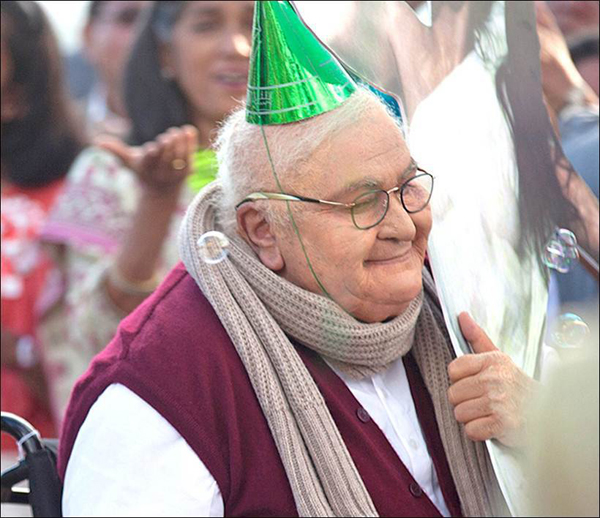 Photo: Screenshot[/caption]
And finally, if you are a weed-smoking, porn-watching octogenarian who is acting as the glue for a family slowly crumbling under the load of anger and resentment, then you better stop whatever the hell it is that you are doing right now and go grab yourself a ticket, because nothing can be as bizarrely therapeutic as watching the latest release from Dharma productions, Kapoor & Sons.
[embed width-"620" height="348"]https://vimeo.com/154953351[/embed]
It’s not just what has been noted above that will help all of you out there in a similar predicament to empathise with in the film. The fact every member of the Kapoor clan has additional skeletons in their respective closets is what makes this dysfunctional family such a curatively riveting watch.
As for the rest of you, I bet you all have personal demons of your own that
Photo: Screenshot[/caption]
And finally, if you are a weed-smoking, porn-watching octogenarian who is acting as the glue for a family slowly crumbling under the load of anger and resentment, then you better stop whatever the hell it is that you are doing right now and go grab yourself a ticket, because nothing can be as bizarrely therapeutic as watching the latest release from Dharma productions, Kapoor & Sons.
[embed width-"620" height="348"]https://vimeo.com/154953351[/embed]
It’s not just what has been noted above that will help all of you out there in a similar predicament to empathise with in the film. The fact every member of the Kapoor clan has additional skeletons in their respective closets is what makes this dysfunctional family such a curatively riveting watch.
As for the rest of you, I bet you all have personal demons of your own that 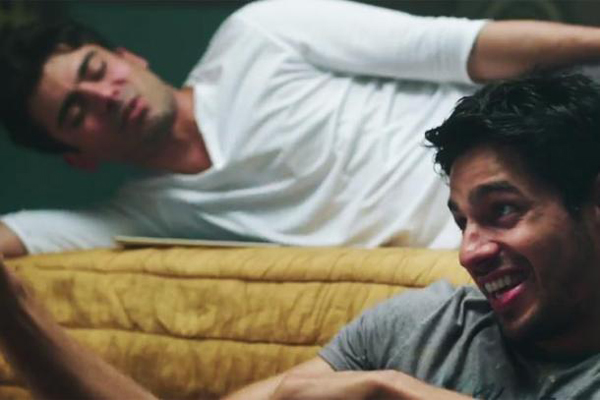 Photo: Screenshot[/caption]
One fine day, the quirky grandfather (
Photo: Screenshot[/caption]
One fine day, the quirky grandfather ( Photo: Screenshot[/caption]
What follows is a household that’s teetering on the brink. Seething with bitterness, yet busy with the daily chores of life – like all dysfunctional families – the Kapoor clan too is always just one dinner-time talk away from reconciliation, but yet at the same time, also just one small act away from completely unravelling into total disintegration.
[caption id="" align="alignnone" width="600"]
Photo: Screenshot[/caption]
What follows is a household that’s teetering on the brink. Seething with bitterness, yet busy with the daily chores of life – like all dysfunctional families – the Kapoor clan too is always just one dinner-time talk away from reconciliation, but yet at the same time, also just one small act away from completely unravelling into total disintegration.
[caption id="" align="alignnone" width="600"]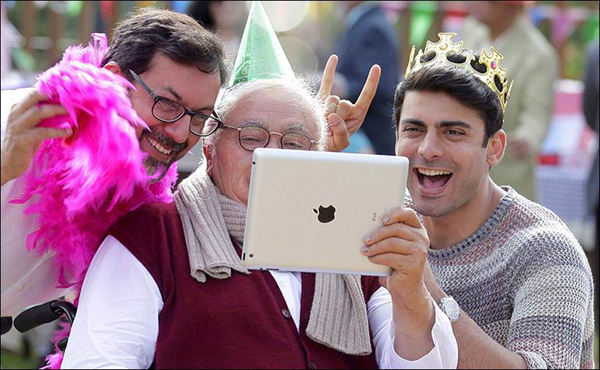 Photo: Screenshot[/caption]
But there is still one person who is obliviously enjoying the reunion: daddu. Now having experienced death at close quarters with the attack, the eccentric patriarch of the family has a simple final wish. A family photograph! But amidst all the Kapoor madness, this straightforward desire turns out to be anything but.
[caption id="" align="alignnone" width="600"]
Photo: Screenshot[/caption]
But there is still one person who is obliviously enjoying the reunion: daddu. Now having experienced death at close quarters with the attack, the eccentric patriarch of the family has a simple final wish. A family photograph! But amidst all the Kapoor madness, this straightforward desire turns out to be anything but.
[caption id="" align="alignnone" width="600"]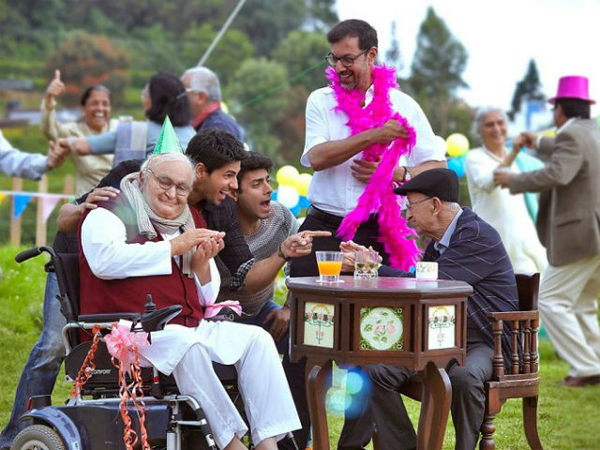 Photo: Ndtv[/caption]
This could be the account of any family anywhere and that is what makes Kapoor & Sons special. The drama is a bitter-sweet slice of your own life. It could have been Sardar & Sons or even Khan & Sons. Heck! ‘Put your own family name’ & Sons, could very well have been the title of the movie, for each of you would find your life parallel to the narrative of the movie at some indeterminate point.
The tale is fascinatingly engaging despite being rooted in the everyday. You might even describe the plot as wafer-thin but what sets it apart from others is the command that
Photo: Ndtv[/caption]
This could be the account of any family anywhere and that is what makes Kapoor & Sons special. The drama is a bitter-sweet slice of your own life. It could have been Sardar & Sons or even Khan & Sons. Heck! ‘Put your own family name’ & Sons, could very well have been the title of the movie, for each of you would find your life parallel to the narrative of the movie at some indeterminate point.
The tale is fascinatingly engaging despite being rooted in the everyday. You might even describe the plot as wafer-thin but what sets it apart from others is the command that  Photo: Screenshot[/caption]
Alia plays her hyper, ditzy, blonde girl act yet again and along with
Photo: Screenshot[/caption]
Alia plays her hyper, ditzy, blonde girl act yet again and along with  Photo: Screenshot[/caption]
But there were no such characterisation issues with the elder sibling,
Photo: Screenshot[/caption]
But there were no such characterisation issues with the elder sibling, 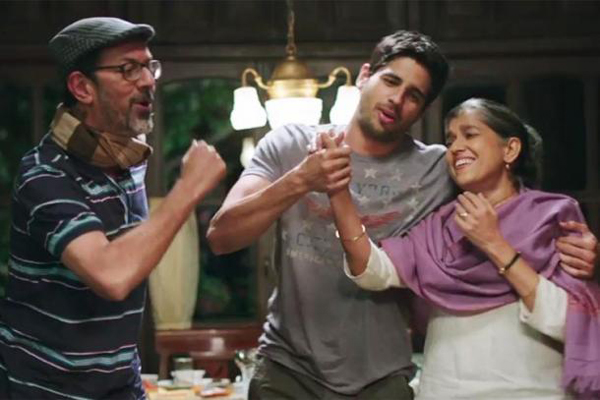 Photo: Screenshot[/caption]
Rishi Kapoor with all the prosthetic work, as the slightly naughty, partly grumpy and completely hedonistic grandfather, lusting after
Photo: Screenshot[/caption]
Rishi Kapoor with all the prosthetic work, as the slightly naughty, partly grumpy and completely hedonistic grandfather, lusting after  Photo: Screenshot[/caption]
The choice of setting, the town of Coonoor is a spectacular idea and the cinematography does the hill station full justice by capturing the freshness with frames where you can, well, almost smell the greenery.
https://www.instagram.com/p/3yoFcZC-7W?
Dialogues are as
Photo: Screenshot[/caption]
The choice of setting, the town of Coonoor is a spectacular idea and the cinematography does the hill station full justice by capturing the freshness with frames where you can, well, almost smell the greenery.
https://www.instagram.com/p/3yoFcZC-7W?
Dialogues are as  [poll id="473"]
[poll id="473"]





 Ranbir Kapoor, Anushaka Sharma and our very own Fawad Khan.
Ranbir Kapoor, Anushaka Sharma and our very own Fawad Khan. Karan Johar and Fawad Khan
Karan Johar and Fawad Khan Anushaka Sharma
Anushaka Sharma Ranbir Kapoor
Ranbir Kapoor Fawad Khan
Fawad Khan Anushaka Sharma
Anushaka Sharma Ranbir Kapoor and Aishwarya Rai Bachan
Ranbir Kapoor and Aishwarya Rai Bachan Ranbir Kapoor and Anushaka Sharma
Ranbir Kapoor and Anushaka Sharma Ranbir Kapoor and Aishwarya Rai Bachan
Ranbir Kapoor and Aishwarya Rai Bachan Ranbir Kapoor and Anushaka Sharma
Ranbir Kapoor and Anushaka Sharma Aishwarya Rai Bachan
Aishwarya Rai Bachan Ranbir Kapoor and Anushaka Sharma
Ranbir Kapoor and Anushaka Sharma Ranbir Kapoor, Anushaka Sharma and Aishwarya Rai Bachan[/caption]
6. Karan Johar
We will have to accept that Karan Johar is the only director who has a powerful presence, even when he’s behind the lens. He knows how to connect with the audience. In other words, he masters the crowd pulling factor.
[caption id="" align="alignnone" width="600"]
Ranbir Kapoor, Anushaka Sharma and Aishwarya Rai Bachan[/caption]
6. Karan Johar
We will have to accept that Karan Johar is the only director who has a powerful presence, even when he’s behind the lens. He knows how to connect with the audience. In other words, he masters the crowd pulling factor.
[caption id="" align="alignnone" width="600"] Anushaka Sharma
Anushaka Sharma Ranbir Kapoor and Anushaka Sharma
Ranbir Kapoor and Anushaka Sharma Ranbir Kapoor and Aishwarya Rai Bachan
Ranbir Kapoor and Aishwarya Rai Bachan


 Photo: Twitter[/caption]
The cherry on the cake has to be
Photo: Twitter[/caption]
The cherry on the cake has to be 
 Relatively unknown ‘news’ organisations are proving to be quite the hit with their click-bait strategy.
Relatively unknown ‘news’ organisations are proving to be quite the hit with their click-bait strategy. Needless to say, the story went viral.
Needless to say, the story went viral. The headline was misleading and was only meant to serve one purpose: to make it go viral.
The headline was misleading and was only meant to serve one purpose: to make it go viral. This is a time when journalism has
This is a time when journalism has 
 Hina Dilpazeer plays an ageing TV hostess.[/caption]
The movie is about how Dilpazeer feels once she discovers that her husband plans to replace her with a much younger presenter and give her a grander morning show. He also plans to marry the replacement.
[caption id="" align="alignnone" width="600"]
Hina Dilpazeer plays an ageing TV hostess.[/caption]
The movie is about how Dilpazeer feels once she discovers that her husband plans to replace her with a much younger presenter and give her a grander morning show. He also plans to marry the replacement.
[caption id="" align="alignnone" width="600"] Naseeruddin Shah as the owner of a famous TV channel.[/caption]
Jeewan Hathi also features a married couple that participates in a morning show to win a 60 inch colour LED TV. The movie goes on to unveil what happens when the media gets involved in their lives.
[caption id="" align="alignnone" width="600"]
Naseeruddin Shah as the owner of a famous TV channel.[/caption]
Jeewan Hathi also features a married couple that participates in a morning show to win a 60 inch colour LED TV. The movie goes on to unveil what happens when the media gets involved in their lives.
[caption id="" align="alignnone" width="600"] A married couple that participates in a morning show to win a 60 inch colour LED TV.[/caption]
Performance wise, Jeewan Hathi is a terrible attempt. Hina Dilpazeer is a huge let down. Considering the level of performance she delivered earlier this year on a small screen, Jeewan Hathi is anything but impressive. She wasted her opportunity by not doing justice to a character that had so much potential; a range of emotions and expressions that were not successfully conveyed. Naseeruddin Shah only emerges in the movie for two scenes and a song; thus, his character is wasted as well, as his capabilities were not utilised efficiently. Considering Naseeruddin Shah’s calibre, Jeewan Hathi is one of his below average characters.
Adnan Jaffar is bad, he’s good looking but he seems to enact the same role he played in
A married couple that participates in a morning show to win a 60 inch colour LED TV.[/caption]
Performance wise, Jeewan Hathi is a terrible attempt. Hina Dilpazeer is a huge let down. Considering the level of performance she delivered earlier this year on a small screen, Jeewan Hathi is anything but impressive. She wasted her opportunity by not doing justice to a character that had so much potential; a range of emotions and expressions that were not successfully conveyed. Naseeruddin Shah only emerges in the movie for two scenes and a song; thus, his character is wasted as well, as his capabilities were not utilised efficiently. Considering Naseeruddin Shah’s calibre, Jeewan Hathi is one of his below average characters.
Adnan Jaffar is bad, he’s good looking but he seems to enact the same role he played in  All photos: screenshots
All photos: screenshots
 Nobody does crazy like Pakistan. In 2016, the world lost their collective cool and Pakistan was put on the crazy back burner. But that does not mean we didn’t have our moments.
It is time to acknowledge those moments. The strangest out of all the weird stories, the most real-fake news, as well as the funniest – let’s honour the best.
Presenting, the Social Media Awards for 2016!
From
Nobody does crazy like Pakistan. In 2016, the world lost their collective cool and Pakistan was put on the crazy back burner. But that does not mean we didn’t have our moments.
It is time to acknowledge those moments. The strangest out of all the weird stories, the most real-fake news, as well as the funniest – let’s honour the best.
Presenting, the Social Media Awards for 2016!
From  The time for politics is over; we are in the age of the celebrity – Donald Trump
The time for politics is over; we are in the age of the celebrity – Donald Trump  Ideally this award would be given to the moments where Hamza Ali Abbasi
Ideally this award would be given to the moments where Hamza Ali Abbasi  2016 was the year that patriarchy was challenged more vehemently on social media than ever before. Even so, some men around the world
2016 was the year that patriarchy was challenged more vehemently on social media than ever before. Even so, some men around the world  The typical Pakistani reaction to ‘bold’ videos is,
The typical Pakistani reaction to ‘bold’ videos is,
 And the nominees are:
1. When Pervez Rasheed refused to
And the nominees are:
1. When Pervez Rasheed refused to  Khabaristan Times can try as much as they want – they cannot come up with fake news that is crazier than our actual news. I am not even going to have nominees for this one – my favourite fake news of the year is when Donald Trump
Khabaristan Times can try as much as they want – they cannot come up with fake news that is crazier than our actual news. I am not even going to have nominees for this one – my favourite fake news of the year is when Donald Trump  I don’t blame the kids – I blame the adults who let this happen!
https://www.youtube.com/watch?v=HbwakFKRhVw
I don’t blame the kids – I blame the adults who let this happen!
https://www.youtube.com/watch?v=HbwakFKRhVw
 A bike wala
A bike wala  This award goes to the Punjab Curriculum for Home Economics for
This award goes to the Punjab Curriculum for Home Economics for  Defence Housing Authority security for
Defence Housing Authority security for 
 https://twitter.com/mubasherlucman/status/737612313591582720?lang=en
Looking forward to more crazy moments in 2017. The world has stepped up its game. We need to follow suit.
Rest in peace,
https://twitter.com/mubasherlucman/status/737612313591582720?lang=en
Looking forward to more crazy moments in 2017. The world has stepped up its game. We need to follow suit.
Rest in peace, 
 After all, its signature product, the Mehran, has remained static, passing onto the next generation like a family heirloom no one wants.
A comparison is unfair, though.
If one could forget Suzuki’s relationship with Pakistan, which is a difficult task since it is the
After all, its signature product, the Mehran, has remained static, passing onto the next generation like a family heirloom no one wants.
A comparison is unfair, though.
If one could forget Suzuki’s relationship with Pakistan, which is a difficult task since it is the  The
The  Its size is close to the 2016 Vezel and its horsepower is hovering near the same level. The kerb weight is just five kilograms apart. So they are close competitors in terms of space, dimensions and body weight.
But within the model, the Vitara has come a long way from the 1990s when smaller, two-door-with luggage-space was seen in Pakistan. The Grand Vitara, which Suzuki introduced a decade ago, was highly unsuccessful due to multiple reasons including price.
Its size is close to the 2016 Vezel and its horsepower is hovering near the same level. The kerb weight is just five kilograms apart. So they are close competitors in terms of space, dimensions and body weight.
But within the model, the Vitara has come a long way from the 1990s when smaller, two-door-with luggage-space was seen in Pakistan. The Grand Vitara, which Suzuki introduced a decade ago, was highly unsuccessful due to multiple reasons including price.
 The Vitara, which Suzuki so proudly affiliates with actor
The Vitara, which Suzuki so proudly affiliates with actor  This addition to the Suzuki family may very well be a welcome one given that this Japanese company has always thrived on lower prices, lower-quality vehicles and high volumes.
We are thrilled to see that the concept of an airbag will finally be applied to a Suzuki vehicle. Vitara will not be driven on volume. It’s a niche car, meant for people who want the feel of a SUV, but don’t want to spend all the moolah on it. Is it affordable? For the majority, no.
But is it worth the money? Probably.
This addition to the Suzuki family may very well be a welcome one given that this Japanese company has always thrived on lower prices, lower-quality vehicles and high volumes.
We are thrilled to see that the concept of an airbag will finally be applied to a Suzuki vehicle. Vitara will not be driven on volume. It’s a niche car, meant for people who want the feel of a SUV, but don’t want to spend all the moolah on it. Is it affordable? For the majority, no.
But is it worth the money? Probably.
 This is the first Suzuki vehicle that may well attract attention due to its features. Suzuki has made the effort and thought of Pakistan as a worthy market, finally. Its previous attempt,
This is the first Suzuki vehicle that may well attract attention due to its features. Suzuki has made the effort and thought of Pakistan as a worthy market, finally. Its previous attempt,  For a little under Rs4 million, the Vitara seems like good value for money. It doesn’t have too many competitors at this point in time and that is an added bonus for a company ridiculed to have looted Pakistani consumers for at least two generations.
[poll id="731"]
For a little under Rs4 million, the Vitara seems like good value for money. It doesn’t have too many competitors at this point in time and that is an added bonus for a company ridiculed to have looted Pakistani consumers for at least two generations.
[poll id="731"]


